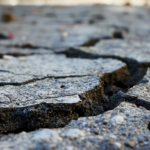In this instructional article, we will guide you through the process of installing a water filtration system in a professional and efficient manner. By understanding the importance of water quality and selecting the appropriate filtration system, you will be able to enjoy clean and safe water in your home. With step-by-step instructions and troubleshooting tips, we aim to provide you with the necessary knowledge and tools to successfully install and maintain your water filtration system.
Understanding Water Filtration Systems
Undoubtedly, understanding water filtration systems is essential for ensuring the delivery of clean and contaminant-free water. Water filtration systems offer numerous benefits, including the removal of impurities, chemicals, and contaminants that can be harmful to human health. By installing a water filtration system, individuals can enjoy improved taste and odor in their drinking water, as well as peace of mind knowing that their water is safe to consume. There are various types of water filters available on the market, each designed to target specific contaminants. Some common types include activated carbon filters, reverse osmosis systems, and UV filters. Activated carbon filters are effective in removing chlorine, volatile organic compounds (VOCs), and some heavy metals. Reverse osmosis systems use a membrane to remove a wide range of impurities, while UV filters use ultraviolet light to kill bacteria and viruses. Understanding the different types of water filters and their capabilities is crucial in selecting the most suitable system for your specific needs.
Assessing Your Water Quality
To accurately assess your water quality, it is important to conduct regular testing and analysis of various contaminants present, such as bacteria, lead, and pesticides. Water quality testing allows you to identify potential health risks and determine the best course of action to address any issues. There are several sources of water contamination that need to be considered. These include industrial activities, agricultural practices, improper waste disposal, and aging infrastructure. Industrial activities can introduce harmful chemicals into water sources, while agricultural practices can lead to the presence of pesticides and fertilizers. Improper waste disposal can contaminate water with toxins and pollutants. Additionally, aging infrastructure can result in the leaching of lead from old pipes. By understanding the potential sources of water contamination and conducting regular testing, you can ensure the safety and quality of your drinking water.
Selecting the Right Water Filtration System
When selecting the right water filtration system, it is important to consider factors such as the specific contaminants present in your water and the filtration technology that best addresses those contaminants. With a wide range of water filtration options available, comparing filtration systems becomes crucial in making an informed decision. It is necessary to understand the different types of filtration technologies, such as activated carbon filters, reverse osmosis systems, and UV disinfection, to determine which one is most suitable for your needs. Additionally, evaluating the effectiveness of each filtration system in removing specific contaminants, such as lead, chlorine, or bacteria, is essential. Factors like cost, maintenance requirements, and installation process should also be taken into account when comparing filtration systems. By carefully considering these factors, you can choose the right water filtration system to ensure clean and safe drinking water for your household.
Gathering the Necessary Tools and Materials
To successfully install a water filtration system, it is crucial to gather the necessary tools and materials. The essential tools for installation include a wrench, pliers, and a screwdriver. Additionally, the required materials for setup may include the water filtration unit, filter cartridges, and any necessary fittings or connectors. Ensuring that you have the right equipment at hand will make the installation process smoother and more efficient.
Essential Tools for Installation
Acquiring the proper tools and materials is crucial for a successful installation of a water filtration system. When it comes to installing a water filtration system, having the right tools can make the process much smoother and more efficient. Some of the essential tools for installation include a pipe cutter, adjustable wrench, Teflon tape, and a drill with the appropriate bits. A pipe cutter is necessary for cutting the pipes to the correct length, while an adjustable wrench is needed for tightening fittings. Teflon tape is used to create a watertight seal between pipe threads, and a drill with the appropriate bits is required for drilling holes in walls or cabinets for mounting the system. By having these tools readily available, the installation process can be completed with ease and ensure a properly functioning water filtration system.
Required Materials for Setup
The installation of a water filtration system requires the gathering of the necessary tools and materials, such as a pipe cutter and Teflon tape. However, before beginning the installation process, it is crucial to go through a planning process to ensure a smooth and successful setup. The planning process involves determining the type of filtration system needed based on water quality, flow rate, and specific requirements. Additionally, it is essential to locate the optimal installation point and ensure easy access for maintenance and filter replacements. Once the planning process is complete, the installation steps can be followed. These typically involve shutting off the water supply, cutting the pipes, installing the filtration unit, connecting the pipes using fittings, and checking for leaks. It is important to carefully follow the manufacturer’s instructions to ensure proper installation and optimal performance of the water filtration system.
Gathering the Right Equipment
Before starting the installation process, it is essential to gather the right equipment, such as a pipe cutter and Teflon tape, to ensure a successful setup. One of the crucial steps in setting up a water filtration system is choosing the right filter. There are various types of filters available in the market, each with its own set of advantages and disadvantages. It is important to consider factors such as the specific contaminants you want to remove, the flow rate required, and the maintenance needs of the filter. Additionally, budget considerations play a significant role in filter selection. While some filters may be more expensive upfront, they may require less frequent replacements or offer better performance. By carefully considering these factors, you can choose the right filter for your water filtration system that fits both your needs and budget.
Preparing Your Plumbing for Installation
Before installing a water filtration system, it is crucial to prepare your plumbing for the upcoming modifications. This may involve making necessary adjustments to the existing pipes and connections to accommodate the new system. It is highly recommended to seek professional assistance during this process to ensure that the plumbing is properly prepared and ready for installation.
Required Plumbing Modifications
In order to ensure a seamless installation process, it is essential to make the necessary plumbing modifications to accommodate the water filtration system. When making these modifications, it is important to consider plumbing regulations and budget considerations. Plumbing regulations vary by location, so it is crucial to research and adhere to the specific guidelines in your area. This may include obtaining permits or hiring a licensed plumber to perform the necessary modifications. Additionally, budget considerations play a role in determining the extent of the plumbing modifications needed. It is important to evaluate the existing plumbing system and assess any potential upgrades or repairs that may be required to ensure compatibility with the water filtration system. By carefully considering plumbing regulations and budget considerations, you can ensure a successful installation of your water filtration system.
Professional Assistance Recommended
The professional assistance recommended for preparing your plumbing for installation includes hiring a licensed plumber to assess the existing system and make any necessary modifications. While some homeowners may consider DIY options, it is important to recognize the value of professional guidance in this process. A licensed plumber has the expertise and experience to ensure that the water filtration system is installed correctly and safely. They can also provide valuable advice on the best type of system for your specific needs and budget. Additionally, a licensed plumber can identify any potential issues with your existing plumbing system that may need to be addressed before installation. By seeking professional assistance, you can have peace of mind knowing that your water filtration system will function effectively and efficiently for years to come.
Installing the Water Filtration System
Our team has successfully completed the installation of the state-of-the-art water filtration system. During the installation process, we utilized various installing techniques to ensure the system was properly set up and functioning efficiently. We followed a step-by-step approach, carefully connecting the necessary pipes, valves, and filters. Additionally, our team paid close attention to the manufacturer’s instructions and guidelines to guarantee a successful installation. We also encountered a few challenges along the way, but with our troubleshooting tips, we were able to overcome them effectively. One common issue we faced was leakage, which we resolved by thoroughly inspecting the connections and tightening them as needed. Overall, the installation of the water filtration system was a success, and our team is confident that it will provide clean and safe water for its intended purpose.
Testing and Adjusting the System
We need to conduct thorough testing and make necessary adjustments to ensure the water filtration system is functioning optimally. Testing methods play a crucial role in determining the efficiency and reliability of the system. By utilizing various testing methods, such as water quality analysis, flow rate measurements, and pressure tests, we can identify any potential issues or deficiencies in the system’s performance. These tests allow us to assess the filtration system’s ability to remove contaminants, maintain a consistent flow rate, and withstand different water pressures. Based on the test results, we can make system adjustments to improve its overall performance. These adjustments may include modifying the filtration media, adjusting the pump speed, or enhancing the system’s monitoring and control mechanisms. By conducting thorough testing and making necessary adjustments, we can ensure that the water filtration system meets the required standards and provides clean, safe, and reliable water for consumption.
Maintaining and Troubleshooting Your Water Filtration System
How can you effectively troubleshoot and maintain your water filtration system to ensure its optimal performance? Regular maintenance and troubleshooting are essential for keeping your water filtration system running smoothly. One common issue that can arise is a decrease in water flow. This can be caused by clogged filters or a malfunctioning pump. To troubleshoot this issue, start by checking and cleaning the filters, ensuring that they are free from debris. If the problem persists, inspect the pump for any signs of damage or malfunction. Regular maintenance tips include replacing filters as recommended by the manufacturer, checking for leaks, and sanitizing the system periodically. It is also important to follow the specific maintenance instructions provided with your water filtration system to ensure its optimal performance and longevity.




